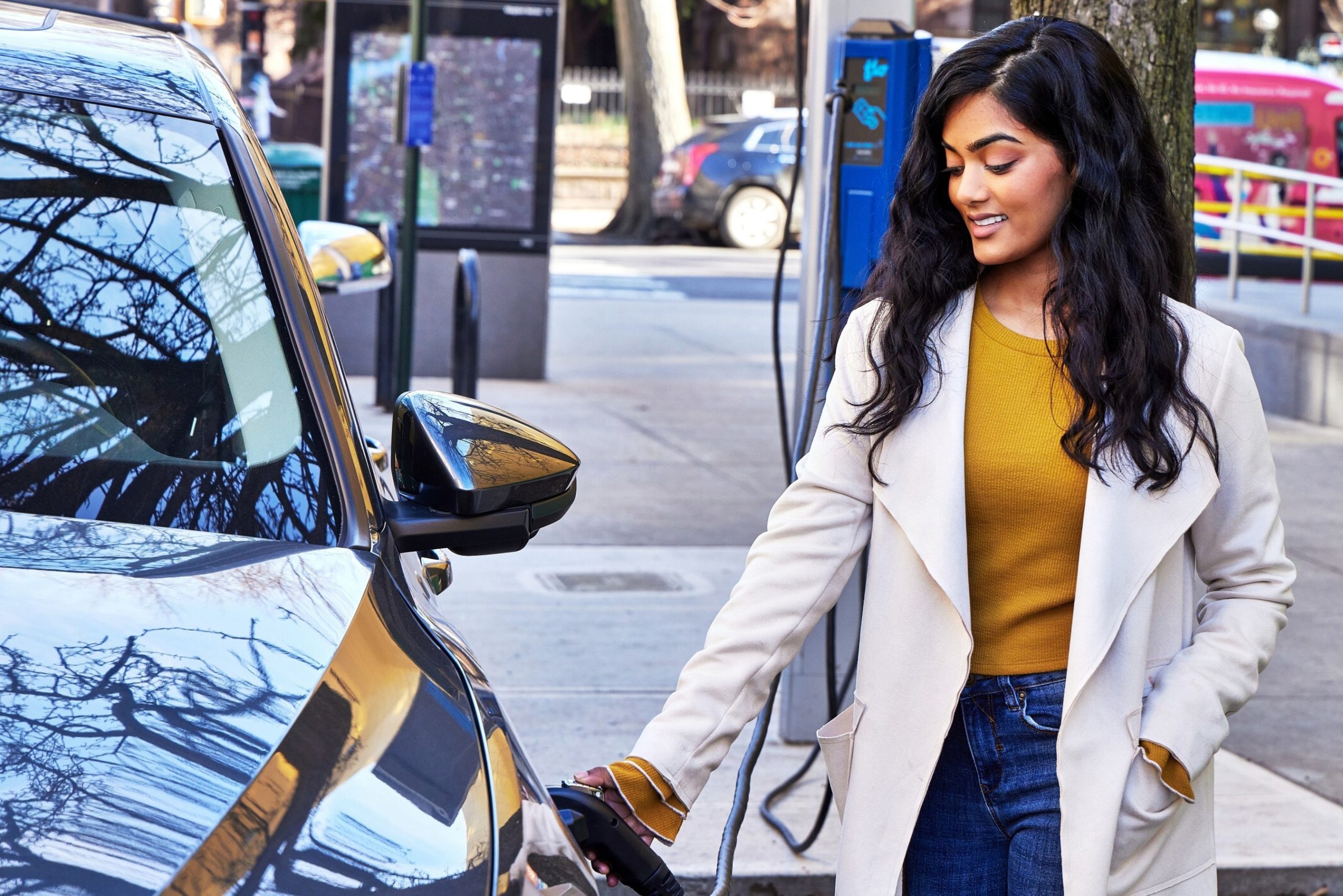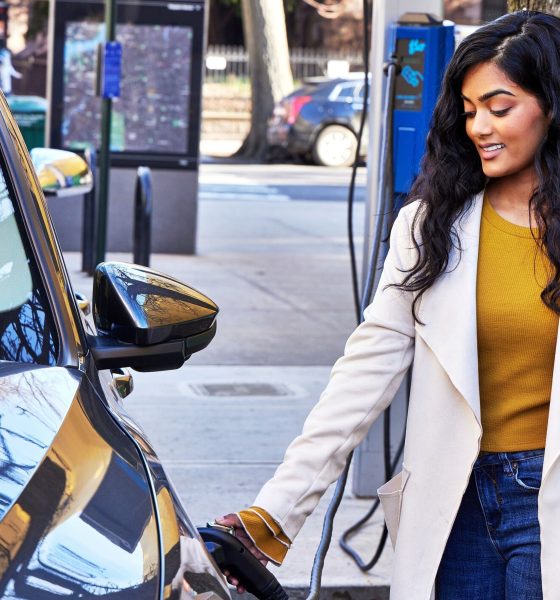

News
How EV adoption is soaring in unlikely circumstances, and what could make it better
The adoption of electric vehicles has continued to skyrocket over the past several years despite challenging supply chain conditions, less-than-ideal geopolitical scenarios, lingering effects of the COVID-19 pandemic, and the soaring cost of EV materials. How this optimism remains was examined in a recent white paper from Cox Automotive, which outlined how EVs continue to defy all odds and gain market share, despite monumental challenges standing in the sector’s way.
EV Adoption grows despite rough conditions
The state of EV adoption is relatively healthy, with more Americans buying EVs than ever despite increased costs and extended wait times for delivery. Automakers across the EV manufacturing industry have been forced to adjust prices and vehicle lineups due to the increased cost of materials and supply chain deals. Tesla, for example, axed the $35,000 Standard Range+ Model 3, and its most affordable vehicle now starts at well over $40,000. Rivian was forced to push prices upward due to materials costs soaring after Russia’s invasion of Ukraine, and these examples are just two of many.
Supply chain bottlenecks have also forced consumers to push back wait times for EVs considerably. Some configurations of EVs are not available until next year due to extensive order logs; take the Long Range Tesla Model 3, for example, which won’t be available until 2023 because of its heavy demand.
Despite this, EV adoption has increased every year since 2019. “Americans are buying EVs at a record pace despite rising prices and long waits for delivery. The fleet industry is also taking note with fleet operators highly motivated to replace their gas-powered fleets with EVs to achieve sustainability goals, drive efficiency and reduce total cost of ownership,” Cox Automotive wrote in the summation of its white paper.
Price Parity and the EV Tax Credit
Price parity has always been talked about when it comes to EVs. It does not take a genius to figure out that the average person will choose an affordable car over an expensive one, even if the expensive one will not require weekly stops at the pump. However, one of the biggest things keeping EVs from extremely rapid adoption is the prices of the cars themselves, which have increased considerably over the past year due to materials costs soaring.
Luckily, consumers can take advantage of the Inflation Reduction Act, which will provide EV buyers with tax credits based on where their vehicle was manufactured and whether the car equips a U.S.-manufactured battery. “Tax incentives available as part of the Inflation Reduction Act of 2022 will be critical to consumer adoption, helping offset the cost of pricey EVs.” This is a key point in the mass adoption in EVs, and consumers will likely stick to gas-powered cars as long as they are able to if they are more affordable than a quality EV.
Supply Chain Disruptions have slowed EV adoption considerably
Related to other points already made, supply chain disruptions and constraints are slowing EV adoption. U.S.-based EV manufacturers are too reliant on foreign companies for parts, Cox said. Automakers are pushing to produce battery packs and other parts in the U.S., which will eventually help combat slow logistics times.
“Global computer chip and material shortages are impacting production, raising the price of new and used vehicles, and contributing to long waits to buy new EV models.” Consumers want affordable and they want it now. Costs will continue to remain high, and wait times will stay long if U.S. automakers do not adopt domestic supply chain strategies.
Superior EV tech is keeping the U.S. competitive
Domestic supply chain bottlenecks may have some consumers willing to spend a little extra opting for other vehicle options. If someone is willing to spend $160,000 on a car and they can buy a 2022 Porsche 911 GT3 and get it in two weeks, they’re more likely to buy that instead of waiting months for a Tesla Model S Plaid if environmental reasons and fuel savings are not being considered. Tech and the innovations of battery chemistries and recycling are keeping the U.S. automakers in focus. If battery makers can develop various battery chemistries comprised of materials that can be sourced in the U.S., wait times will reduce and cars will have more availability.
I’d love to hear from you! If you have any comments, concerns, or questions, please email me at joey@teslarati.com. You can also reach me on Twitter @KlenderJoey, or if you have news tips, you can email us at tips@teslarati.com.

Elon Musk
Elon Musk and Tesla AI Director share insights after empty driver seat Robotaxi rides
The executives’ unoccupied tests hint at the rapid progress of Tesla’s unsupervised Robotaxi efforts.

Tesla CEO Elon Musk and AI Director Ashok Elluswamy celebrated Christmas Eve by sharing personal experiences with Robotaxi vehicles that had no safety monitor or occupant in the driver’s seat. Musk described the system’s “perfect driving” around Austin, while Elluswamy posted video from the back seat, calling it “an amazing experience.”
The executives’ unoccupied tests hint at the rapid progress of Tesla’s unsupervised Robotaxi efforts.
Elon and Ashok’s firsthand Robotaxi insights
Prior to Musk and the Tesla AI Director’s posts, sightings of unmanned Teslas navigating public roads were widely shared on social media. One such vehicle was spotted in Austin, Texas, which Elon Musk acknowleged by stating that “Testing is underway with no occupants in the car.”
Based on his Christmas Eve post, Musk seemed to have tested an unmanned Tesla himself. “A Tesla with no safety monitor in the car and me sitting in the passenger seat took me all around Austin on Sunday with perfect driving,” Musk wrote in his post.
Elluswamy responded with a 2-minute video showing himself in the rear of an unmanned Tesla. The video featured the vehicle’s empty front seats, as well as its smooth handling through real-world traffic. He captioned his video with the words, “It’s an amazing experience!”
Towards Unsupervised operations
During an xAI Hackathon earlier this month, Elon Musk mentioned that Tesla owed be removing Safety Monitors from its Robotaxis in Austin in just three weeks. “Unsupervised is pretty much solved at this point. So there will be Tesla Robotaxis operating in Austin with no one in them. Not even anyone in the passenger seat in about three weeks,” he said. Musk echoed similar estimates at the 2025 Annual Shareholder Meeting and the Q3 2025 earnings call.
Considering the insights that were posted Musk and Elluswamy, it does appear that Tesla is working hard towards operating its Robotaxis with no safety monitors. This is quite impressive considering that the service was launched just earlier this year.
Elon Musk
Starlink passes 9 million active customers just weeks after hitting 8 million
The milestone highlights the accelerating growth of Starlink, which has now been adding over 20,000 new users per day.

SpaceX’s Starlink satellite internet service has continued its rapid global expansion, surpassing 9 million active customers just weeks after crossing the 8 million mark.
The milestone highlights the accelerating growth of Starlink, which has now been adding over 20,000 new users per day.
9 million customers
In a post on X, SpaceX stated that Starlink now serves over 9 million active users across 155 countries, territories, and markets. The company reached 8 million customers in early November, meaning it added roughly 1 million subscribers in under seven weeks, or about 21,275 new users on average per day.
“Starlink is connecting more than 9M active customers with high-speed internet across 155 countries, territories, and many other markets,” Starlink wrote in a post on its official X account. SpaceX President Gwynne Shotwell also celebrated the milestone on X. “A huge thank you to all of our customers and congrats to the Starlink team for such an incredible product,” she wrote.
That growth rate reflects both rising demand for broadband in underserved regions and Starlink’s expanding satellite constellation, which now includes more than 9,000 low-Earth-orbit satellites designed to deliver high-speed, low-latency internet worldwide.
Starlink’s momentum
Starlink’s momentum has been building up. SpaceX reported 4.6 million Starlink customers in December 2024, followed by 7 million by August 2025, and 8 million customers in November. Independent data also suggests Starlink usage is rising sharply, with Cloudflare reporting that global web traffic from Starlink users more than doubled in 2025, as noted in an Insider report.
Starlink’s momentum is increasingly tied to SpaceX’s broader financial outlook. Elon Musk has said the satellite network is “by far” the company’s largest revenue driver, and reports suggest SpaceX may be positioning itself for an initial public offering as soon as next year, with valuations estimated as high as $1.5 trillion. Musk has also suggested in the past that Starlink could have its own IPO in the future.
News
NVIDIA Director of Robotics: Tesla FSD v14 is the first AI to pass the “Physical Turing Test”
After testing FSD v14, Fan stated that his experience with FSD felt magical at first, but it soon started to feel like a routine.

NVIDIA Director of Robotics Jim Fan has praised Tesla’s Full Self-Driving (Supervised) v14 as the first AI to pass what he described as a “Physical Turing Test.”
After testing FSD v14, Fan stated that his experience with FSD felt magical at first, but it soon started to feel like a routine. And just like smartphones today, removing it now would “actively hurt.”
Jim Fan’s hands-on FSD v14 impressions
Fan, a leading researcher in embodied AI who is currently solving Physical AI at NVIDIA and spearheading the company’s Project GR00T initiative, noted that he actually was late to the Tesla game. He was, however, one of the first to try out FSD v14.
“I was very late to own a Tesla but among the earliest to try out FSD v14. It’s perhaps the first time I experience an AI that passes the Physical Turing Test: after a long day at work, you press a button, lay back, and couldn’t tell if a neural net or a human drove you home,” Fan wrote in a post on X.
Fan added: “Despite knowing exactly how robot learning works, I still find it magical watching the steering wheel turn by itself. First it feels surreal, next it becomes routine. Then, like the smartphone, taking it away actively hurts. This is how humanity gets rewired and glued to god-like technologies.”
The Physical Turing Test
The original Turing Test was conceived by Alan Turing in 1950, and it was aimed at determining if a machine could exhibit behavior that is equivalent to or indistinguishable from a human. By focusing on text-based conversations, the original Turing Test set a high bar for natural language processing and machine learning.
This test has been passed by today’s large language models. However, the capability to converse in a humanlike manner is a completely different challenge from performing real-world problem-solving or physical interactions. Thus, Fan introduced the Physical Turing Test, which challenges AI systems to demonstrate intelligence through physical actions.
Based on Fan’s comments, Tesla has demonstrated these intelligent physical actions with FSD v14. Elon Musk agreed with the NVIDIA executive, stating in a post on X that with FSD v14, “you can sense the sentience maturing.” Musk also praised Tesla AI, calling it the best “real-world AI” today.








